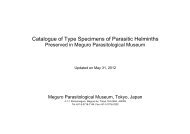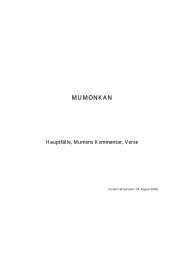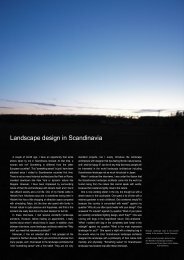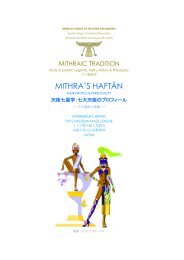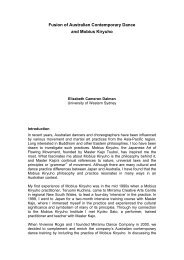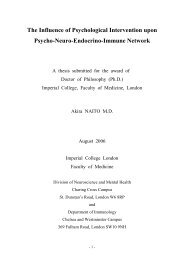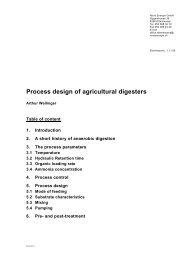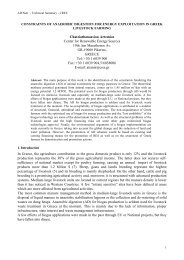III. No-Till Farming Systems - nifty
III. No-Till Farming Systems - nifty
III. No-Till Farming Systems - nifty
Create successful ePaper yourself
Turn your PDF publications into a flip-book with our unique Google optimized e-Paper software.
ANNEX V<br />
Recently Published Book<br />
The Environment and Zero <strong>Till</strong>age<br />
Edited by Helvécio Mattana Saturnino and John N. Landers<br />
Translated by John N. Landers<br />
This impressive book, published recently in<br />
2002, offers a collection of papers by 13 distinguished<br />
authors, presented at the 5 th Brazilian<br />
National Zero <strong>Till</strong>age Meeting at Goiânia, Goiás<br />
State of Brazil in 1996. The book was first published<br />
in Portuguese, then later translated to English.<br />
The following extract has been taken from<br />
the book’s Foreword.<br />
Taking advantage of the highly positive results<br />
of the 5 th Brazilian National Zero <strong>Till</strong>age Meeting<br />
in 1996, this book was edited in Portuguese in<br />
order to better inform both the farming community<br />
and environmentalists, ecologists, politicians,<br />
opinion formers, and the general public of the<br />
benefits of this new technology, Zero <strong>Till</strong>age,<br />
which establishes as strong link between the concerns<br />
of soil conservation and obligations to the<br />
environment. The English edition, translated and published with the support of<br />
FAO, brings an international dimension to Brazil’s pioneering efforts.<br />
When, in 1995, I had the opportunity to show the <strong>No</strong>bel laureate research scientist<br />
<strong>No</strong>rman Borlaug what was being achieved in Brazil in reclaiming the infertile,<br />
acid soils of the “Cerrado” (Tropical Savannah) and Amazon regions, we<br />
sought to show him that we had at our disposal technologies for sustainable agriculture<br />
in the new frontiers of Brazil.<br />
Referring to what he had seen, Dr Borlaug declared in lectures given in Belo<br />
Horizonte and São Paulo:<br />
“It is agronomic management – such as planting at the right time, including<br />
Zero <strong>Till</strong>age, which I admire because it reduces both erosion and costs – which<br />
allows expression of the genetic potential of the new varieties” (April 1995).<br />
“In 1995, I had the pleasure to visit various pars of the Cerrado region. I saw<br />
many large-scale mechanized operations, in which not only was liming employed<br />
but fertilizers were used to very good effect. Also, Conservation Agriculture was<br />
practiced, for instance with Zero <strong>Till</strong>age and Minimum <strong>Till</strong>age, which leave the<br />
crop residues on the soil surface in order to increase soil organic matter and reduce<br />
erosion. In the central savannahs visited I saw little erosion.” (May 1996).<br />
These conclusions complement the declaration of the speakers at the 5 th Bra-<br />
517



